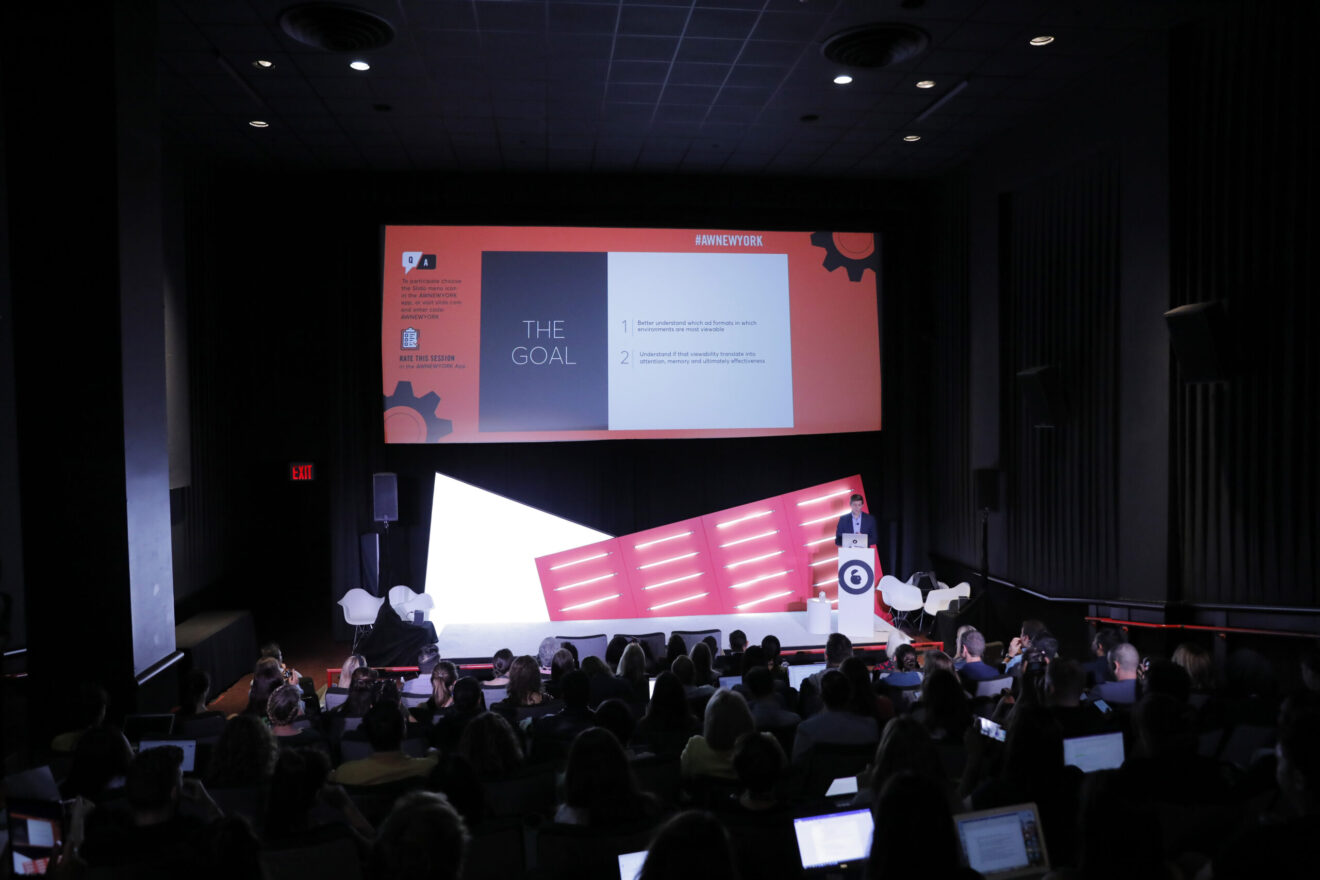Viewability has become the de-facto metric for marketers for measuring the effectiveness of digital ad campaigns, but new research revealed at Advertising Week in New York City indicates that it is an imperfect one when considered on its own.
During a packed lunchtime session during the conference that had an estimated 100,000 attendees, Kargo President and Chief Operating Officer Ryan McConville shared the findings of a study conducted by the mobile advertising company of ads across four platforms: gaming apps, desktop, mobile and Instagram. Using eye-tracking technology, researchers watched 482 participants navigate content across those environments and discovered that the most viewable ads were often the least effective.
This could be a glaring problem for the industry, which has been focused on viewability since the Media Rating Council established viewability standards.
“It’s pretty clear that the industry is looking at this as a metric to optimize,” McConville said.
Banner ads in gaming apps, for example, remain on the screen for a long period of time and rate about 90% on viewability metrics. But participants in the study rarely looked away from the game itself to glance at those display ads and had trouble recalling them afterwards.
When measured against a different set of metrics put forth by Kargo, gaming app ads were the least effective of the bunch. The company tracked three elements related to the ads: “share of page,” or the percentage of page pixels the ad took up when in view; “share of session,” or the percent of time the person spent on an ad out of their entire session; and “ad effectiveness,” or the percentage of time the person looked at the ad when it was viewable. Gaming app ads received an effectiveness score of 1.3%.
The most successful ads based on those measures were large-format ads on mobile devices with animation or video, followed closely by Instagram ads that are also larger in size and more interactive than desktop or mobile banner ads. Both of those were just 50% viewable, but their effectiveness was rated as 10.8%.
Eye-tracking technology showed users pausing on the mobile and Instagram ads and scanning them, and they were able to recall the ads after the fact as well.
“There’s a much larger period of time spent looking at the ad because the ad is taking up so much of the page,” McConville said. “What’s great about this is that they noticed the ads.”
The average person is served about 300 ads daily on their mobile and desktop devices but is usually unable to recall even one, making it crucial for marketers to draw a distinction between what is viewable and what is memorable, McConville told the audience. Marketers should pay attention to viewability, but they should also be wary of optimizing solely based on that metric in a programmatic ad buying environment.
“You can gain viewability by making your ad super small because people don’t need to scroll past it to get to the content they are reading,” McConville noted. “The bigger the ad, the less time it’s in view. But despite those ads being on the screen for a smaller amount of time, they are looked at more.”
